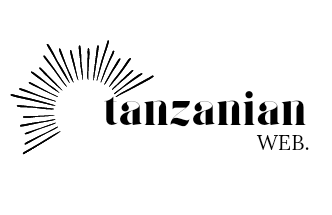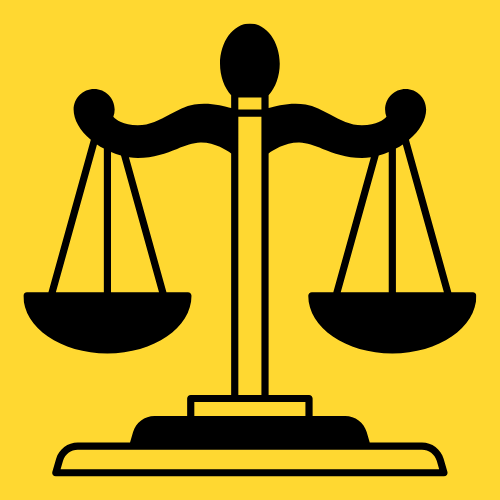This collection of 250 multiple-choice
questions is designed to help candidates prepare for the Economist II
(MDA and LGA) Public Service online test in Tanzania. The questions cover
important topics like economics, government policies, data analysis, and
national statistics, all related to the job duties. The answers are close to
each other to make the test challenging, and each question includes a short
explanation to help understand the correct answer. This set helps candidates
improve their knowledge and skills to perform well in the exam and succeed in
their roles in the public service.
Prepared by:
Economists and compiled by
Johnson Yesaya Mgelwa.
A lawyer stationed in Dar-es-salaam.
0628729934.
Date: July 15, 2025
Dear applicants,
This collection of questions and answers
has been carefully prepared to help all of you to understand the key areas
tested during the interview. The goal is to provide a useful, and practical
study guide so you can all perform confidently and fairly in the selection
process. I wish you the best of luck, and may this resource support you in
achieving success!
Warm regards,
Johnson Yesaya Mgelwa
For Personal Use by Applicants Preparing
for MDA and LGA Economist II interview at Public Service Recruitment Service.
ALL QUESTIONS ARE COMPILED TOGETHER.
1. What is the primary purpose of conducting economic research in public service?
A. To impress stakeholders B. To create public awareness C. To inform policy and planning D. To increase revenue
Answer: C
Rationale: Economic research in public service is primarily conducted to inform the formulation and evaluation of policies and plans that guide socio-economic development.
2. Which of the following best describes Gross Domestic Product (GDP)?
A. The total value of goods and services produced by a country B. The amount of taxes collected in a year C. The total exports minus imports D. The government budget allocation
Answer: A
Rationale: GDP represents the total monetary value of all final goods and services produced within a country over a specific period and is a key economic indicator.
3. In economics, which type of inflation is caused by increased consumer demand?
A. Cost-push inflation B. Built-in inflation C. Demand-pull inflation D. Structural inflation
Answer: C
Rationale: Demand-pull inflation occurs when aggregate demand in an economy outpaces aggregate supply, leading to price increases.
4. What is the main function of a budget in economic planning?
A. To reduce taxation B. To eliminate corruption C. To allocate resources D. To track imports
Answer: C
Rationale: A budget serves as a financial plan for allocating a government's limited resources to various sectors and priorities.
5. Which of the following is an example of fiscal policy?
A. Changing interest rates B. Setting trade tariffs C. Adjusting government spending D. Regulating money supply
Answer: C
Rationale: Fiscal policy involves government decisions on taxation and expenditure to influence economic activity, such as increasing spending to stimulate growth.
6. The Human Development Index (HDI) does NOT include which of the following components?
A. Life expectancy B. Education level C. Gross National Income per capita D. Inflation rate
Answer: D
Rationale: HDI is based on life expectancy, education, and income; it does not include inflation as a component.
7. What type of data is best suited for economic forecasting?
A. Historical time series data B. Qualitative interviews C. Photographic data D. Anecdotal stories
Answer: A
Rationale: Time series data provides past trends and patterns that are essential for predicting future economic outcomes.
8. What is the best method for prioritizing development projects?
A. Alphabetical order B. Political influence C. Cost-benefit analysis D. Project age
Answer: C
Rationale: Cost-benefit analysis allows policymakers to assess the economic value and feasibility of projects before implementation.
9. In Tanzania, the body responsible for compiling national statistics is:
A. TRA B. NBS C. BOT D. TCRA
Answer: B
Rationale: The National Bureau of Statistics (NBS) is the main government agency responsible for collecting, analyzing, and disseminating statistical data.
10. The term "agricultural economics" mainly refers to:
A. Pricing of agricultural land B. Application of economic principles to agriculture C. Rural politics D. Meteorological analysis
Answer: B
Rationale: Agricultural economics applies economic methods to optimize production and distribution in the agricultural sector.
11. What does microeconomics primarily focus on?
A. International trade patterns B. Individual and business decision-making C. National income and inflation D. Fiscal and monetary policy
Answer: B
Rationale: Microeconomics studies individual agents, such as households and firms, and how their decisions affect supply and demand for goods and services.
12. What is the role of a Parliamentary Committee in the context of economic governance?
A. Executing policies B. Preparing national budgets C. Overseeing government spending D. Issuing treasury bonds
Answer: C
Rationale: Parliamentary Committees scrutinize public expenditures and performance, ensuring transparency and accountability in economic governance.
13. Which economic system combines private and public ownership?
A. Traditional economy B. Market economy C. Command economy D. Mixed economy
Answer: D
Rationale: A mixed economy allows for both government and private sector involvement in the production and distribution of goods and services.
14. Which of the following is an indicator of economic development?
A. Inflation rate B. Increased tax burden C. Improved literacy rate D. High population density
Answer: C
Rationale: Economic development reflects improvements in living standards such as health, education, and income; literacy rate is a key indicator.
15. What is the key purpose of collecting economic statistics?
A. To predict elections B. To prepare marketing reports C. To inform development policy D. To reduce employment
Answer: C
Rationale: Economic statistics are essential for formulating, implementing, and evaluating socio-economic policies and plans.
16. Which type of unemployment arises from a mismatch between worker skills and job requirements?
A. Frictional unemployment B. Seasonal unemployment C. Structural unemployment D. Cyclical unemployment
Answer: C
Rationale: Structural unemployment occurs when skills do not match available jobs, often due to technological changes or industry shifts.
17. In Tanzania, the government’s medium-term expenditure framework (MTEF) is designed to:
A. Eliminate all debts B. Plan short-term loans C. Link policy, planning, and budgeting D. Support political campaigns
Answer: C
Rationale: MTEF integrates policy priorities with resource allocation in a consistent medium-term fiscal framework.
18. Which organization manages monetary policy in Tanzania?
A. TBS B. TRA C. BOT D. TANESCO
Answer: C
Rationale: The Bank of Tanzania (BOT) is responsible for implementing monetary policy, such as interest rate adjustments and currency control.
19. An externality in economics refers to:
A. A foreign loan B. A government expenditure C. A side effect of an economic activity D. A domestic tax
Answer: C
Rationale: Externalities are costs or benefits that affect third parties not directly involved in a transaction, like pollution or education.
20. Which method is best for gathering primary economic data?
A. Reviewing old reports B. Conducting field surveys C. Reading newspapers D. Watching television programs
Answer: B
Rationale: Field surveys collect firsthand information from respondents, making them ideal for acquiring primary economic data.
21. What does the term "opportunity cost" mean in economics?
A. The cost of goods in the market B. The value of the next best alternative forgone C. The total cost of production D. The price paid for labor
Answer: B
Rationale: Opportunity cost is the benefit lost by choosing one alternative over another. It is fundamental in decision-making and resource allocation.
22. A key characteristic of public goods is that they are:
A. Excludable and rivalrous B. Produced by private firms C. Non-excludable and non-rivalrous D. Priced through market demand
Answer: C
Rationale: Public goods, like national defense and clean air, are available to all (non-excludable) and one person’s use does not reduce availability to others (non-rivalrous).
23. Which of the following is used to control inflation?
A. Increasing government expenditure B. Lowering interest rates C. Decreasing the money supply D. Expanding exports
Answer: C
Rationale: Reducing the money supply helps lower inflation by decreasing overall spending power in the economy.
24. The best economic analysis for assessing the impact of fertilizer subsidies on maize production is:
A. Regression analysis B. Pie chart interpretation C. SWOT analysis D. Value chain mapping
Answer: A
Rationale: Regression analysis can measure the relationship between input variables (like subsidies) and output (maize production).
25. In data collection, stratified sampling is best used when:
A. The population is homogenous B. You want to avoid statistics C. The population is divided into subgroups D. You are unsure of the sample frame
Answer: C
Rationale: Stratified sampling improves accuracy by ensuring each subgroup is adequately represented.
26. Which of the following is most appropriate when analyzing population trends?
A. Production matrix B. Demographic statistics C. Input-output table D. Trade flow diagram
Answer: B
Rationale: Demographic statistics offer detailed information on population characteristics such as age, gender, and growth rate.
27. Which policy tool is most effective in reducing unemployment in the short run?
A. Cutting imports B. Expansionary fiscal policy C. Raising interest rates D. Decreasing wages
Answer: B
Rationale: Expansionary fiscal policy, such as increased government spending or tax cuts, can boost demand and create jobs.
28. Agricultural extension services primarily aim to:
A. Build irrigation schemes B. Promote political participation C. Transfer knowledge to farmers D. Regulate pesticide trade
Answer: C
Rationale: Extension services help improve farming practices by educating farmers on technology, inputs, and market trends.
29. What is meant by "macroeconomic stability"?
A. Constant GDP growth B. Balanced personal budgets C. Low inflation and steady growth D. Government controlling all markets
Answer: C
Rationale: Macroeconomic stability refers to an economic environment with controlled inflation, low unemployment, and consistent growth.
30. The Lorenz Curve is used to show:
A. Employment levels B. Trade volumes C. Income inequality D. Agricultural output
Answer: C
Rationale: The Lorenz Curve graphically represents the distribution of income or wealth within a population, highlighting inequality.
📘 Get the Full Aptitude Test PDF (Questions 31–250)
You’ve just accessed the first 30 questions. The full set of 250 expertly prepared aptitude test questions for the Economist II – MDA & LGA is available, pay and get access.
To get access of the full PDF through your Gmail (Questions 51–250), please make a payment of Tsh 10,000 to the LIPA numbers below:
After payment, please send a text message with the words “Economist II” to:
⚠️ Important Notice
- The PDF will be watermarked with your name and phone number and protected for personal use only.
- Redistribution, sharing, screenshotting, or copying the contents is strictly prohibited. When you share unlawfully, your name and phone number are visible and easy to trace that you leaked a document to other third parties.
- Legal action may be taken against the misuse of this material.
Thank you for supporting quality content. Best of luck in your interview preparation!


%20(10).png)





0 Comments
PLACE YOUR COMMENT HERE
WARNING: DO NOT USE ABUSIVE LANGUAGE BECAUSE IT IS AGAINST THE LAW.
THE COMMENTS OF OUR READERS IS NOT OUR RESPONSIBILITY.